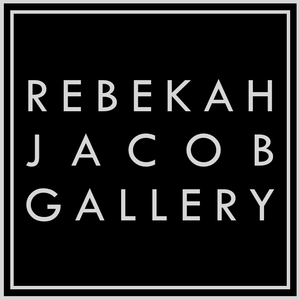William Eggleston
“Often people ask what I’m photographing, which is a hard question to answer. And the best what I’ve come up with is I just say: Life today.”
DYE TRANSFER
Many of William Eggleston’s photographs have been processed using dye-transfer. Originally used for magazine and advertising copy, the dyes used in the dye transfer process are very spectrally pure compared to normal coupler-induced photographic dyes and the dye transfer process possesses a larger color gamut and tonal scale than any other process, including inkjet. Another important characteristic of dye transfer is that it allows the practitioner the highest degree of photographic control compared to any other photochemical colour print process - something which enabled Eggleston to control each individual colour in his bold photographs.
The use of dye imbibition for making full-color prints from a set of black-and-white photographs taken through different color filters was first proposed and patented by Charles Cros in 1880.[1] It was commercialized by Edward Sanger-Shepherd, who in 1900 was marketing kits for making color prints on paper and slides for projection.
Technicolor introduced dye transfer in its Process 3, introduced in the feature film The Viking (1928), which was produced by the Technicolor Corporation and released by Metro-Goldwyn-Mayer. Technicolor's two previous systems were an additive color process and a physically problematic subtractive color process, the latter requiring two prints cemented together back-to-back. Process 3 used an imbibition process pioneered by the Handschiegl color process, which had been created in 1916 for Cecil B. DeMille's feature film Joan the Woman (1917). Technicolor further refined the imbibition dye transfer process in its Process 4, introduced in 1932, which employed three simultaneously filmed negatives.
In the 1940s, this process was popularized by the work of Jeannette Klute at Eastman Kodak for general-purpose graphic arts work, but not for motion picture work, which remained exclusive to Technicolor (and for which Eastman Kodak was manufacturing Technicolor's light-sensitive camera and printing films, including the "blank receiver" film, on an exclusive basis, but not Technicolor's dyes), and is sometimes referred to by such generic names as "wash-off relief printing" and "dye imbibition" printing. The process requires making three printing matrices (one for each subtractive primary color) which absorb dye in proportion to the density of a gelatin relief image. Successive placement of the dyed film matrices, one at a time, "transfers" each primary dye by physical contact from the matrix to a mordanted, gelatin-coated paper.
William Eggleston assumes a neutral gaze and creates his art from commonplace subjects: a farmer’s muddy Ford truck, a red ceiling in a friend’s house, the contents of his own refrigerator. In his work, Eggleston photographs “democratically”–literally photographing the world around him. His large-format prints monumentalize everyday subjects, everything is equally important; every detail deserves attention.
A native Southerner raised on a cotton plantation in the Mississippi Delta, Eggleston has created a singular portrait of his native South since the late 1960s. After discovering photography in the early 1960s, he abandoned a traditional education and instead learned from photographically illustrated books by Walker Evans, Henri Cartier-Bresson, and Robert Frank. Although he began his career making black-and-white images, he soon abandoned them to experiment with color technology to record experiences in more sensual and accurate terms at a time when color photography was largely confined to commercial advertising. In 1976 with the support of John Szarkowski, the influential photography historian, critic, and curator, Eggleston mounted “Color Photographs” a now famous exhibition of his work at the Museum of Modern Art, New York.William Eggleston’s Guide , in which Szarkowski called Eggleston’s photographs “perfect,” accompanied this groundbreaking one-person show that established his reputation as a pioneer of color photography. His subjects were mundane, everyday, often trivial, so that the real subject was seen to be color itself. These images helped establish Eggleston as one of the first non-commercial photographers working in color and inspired a new generation of photographers, as well as filmmakers.
Eggleston has published his work extensively. He continues to live and work in Memphis, and travels considerably for photographic projects.










